The purpose of this article is to give you a bit of background on the Foreign Exchange (Forex) market and to give you the first couple of steps to get started in trading.
If you’re reading this article, I’ll assume you’ve been intrigued by the picture above. For a long time, I’ve been interested in trading and for the past 3 years, I’ve been involved as a Forex trader.
Before going further, let me say that trading isn’t for anyone, but that you DO NOT need to be an “A student” to trade profitably. What you’ll need is to come into trading with a plan and some emotional awareness to control yourself and grow over time.
Introduction to Forex Trading: What is Forex?
I’m actually quite surprised to see people’s look when I mention Forex in a conversation.
“What?”, they say.
And the interesting part is that the Forex (abbreviation for Foreign Exchange) market is part of our daily lives.
In short, it is the market in which currencies all around the world are bought and sold.
For instance, whenever you’re looking to buy Euros for your upcoming trip in Europe, you’ll be contributing to the rise of the EUR/USD rate (given you’re paying with U.S. Dollars).
That being said, there are several other factors contributing to the rise and fall of a certain currency, including the Gross Domestic Product (GDP), Unemployment rate, Exports, Interest rates, and more.
The idea for the currency market is that two currencies (or countries) are compared one to another. The USD/CAD for instance, shows the relation between the United States and Canada. If things are going better in the United States than in Canada, the rate is likely to rise. If the inverse is true, the rate is likely to fall.
…But I’ve never been a huge fan of economics.
How Traders Make Money In Forex Without Economic Data
The #1 problem with relying on economic data to place a trade is that you are very likely to be late in your entry and exit point.
We’ll go with an example…
Let say that the unemployment claims are scheduled for release today in the United States.
The result: 253K unemployment claims vs. a forecast or 274K.
That’s positive! But there’s absolutely no way to know precisely how other people in the market will react to that news.
In fact, as I’m writing this, the results above came out and EUR/USD went up strongly, meaning that the release was perceived negatively (see the chart below).

See, the problem here is that we have no way to know how strong or how little this news release will affect the market as opposed to all other data of the economy.
Now we’ll get to the interesting part…
The way I, and many other traders, trade do not take into account economic data…at all.
I base myself on the fact that the chart of any currency pair represents the relationship between buyers and sellers of that currency pair.
If the buyers are more aggressive, the price will go up. If the sellers are more aggressive than the buyers, the price will go down.
The question to ask could be summarized as: “Who’s in control of the market?”
Here are a few examples:
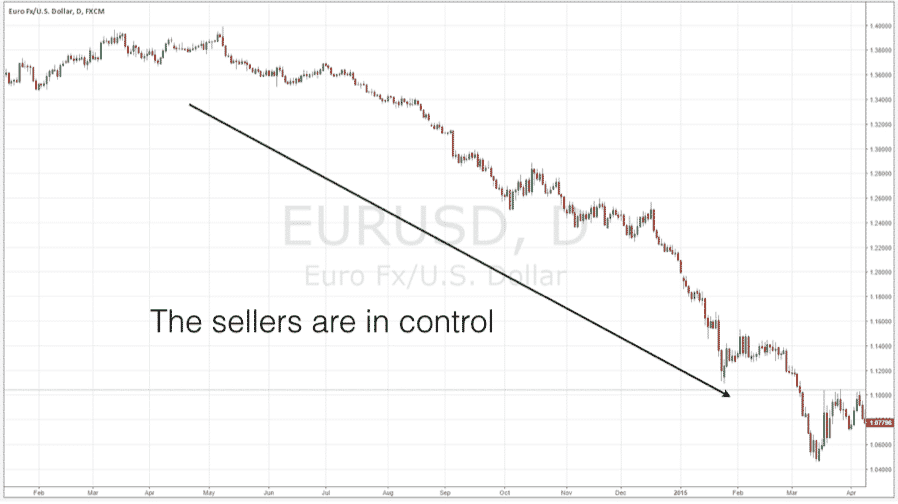
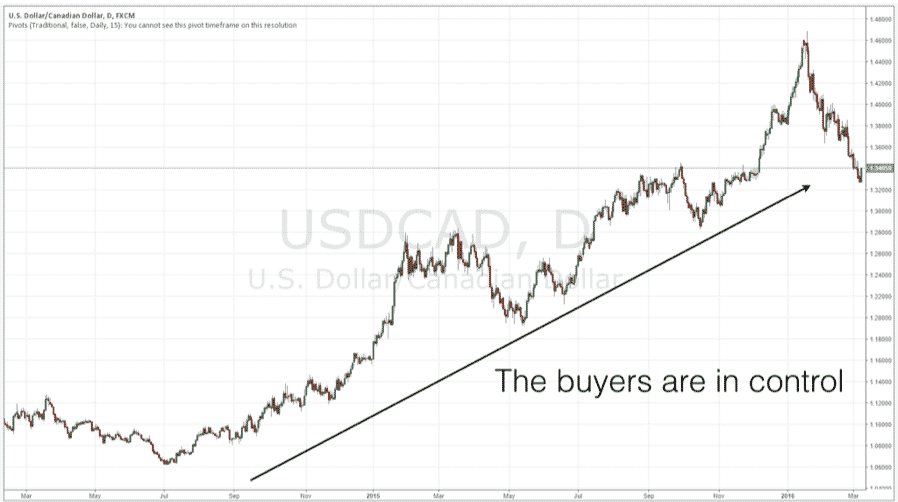

As soon as I know who is in control of the market, I can decide on a location to enter a trade.
The Tools To Use
I’ll try to make this section as simple as possible. Unfortunately, many new traders in Forex or other markets over-complicate things.
Let me put emphasis on this:
As soon as I know who is in control of the market, I can decide on a location to enter a trade.
Alright…
There are two primary tools I use to interpret any currency pair: technical indicators & Japanese Candlesticks.
Japanese Candlesticks
Japanese candlesticks are an easy way to determine who has been more aggressive over a certain period of time.
A red candle on the following image would mean that the sellers are in control of the market since the price opened high and closed lower. On my charts, those are black. At the inverse, a green (or white) candle would display an increase in price.
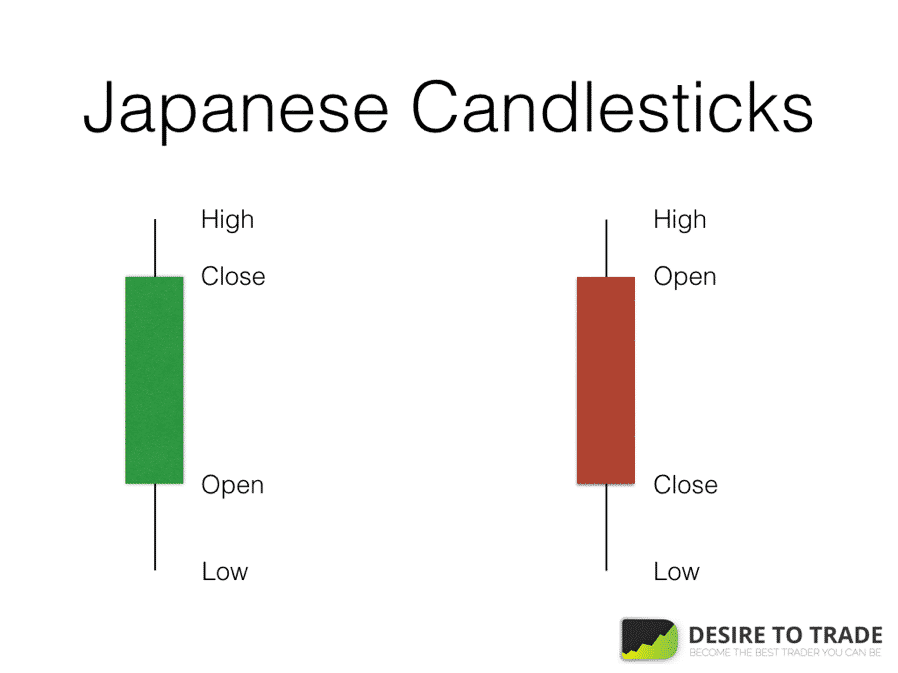
For instance, if I were to look on a daily chart (one candle per day) and see the following, I’d know the buyers were aggressive for the day.
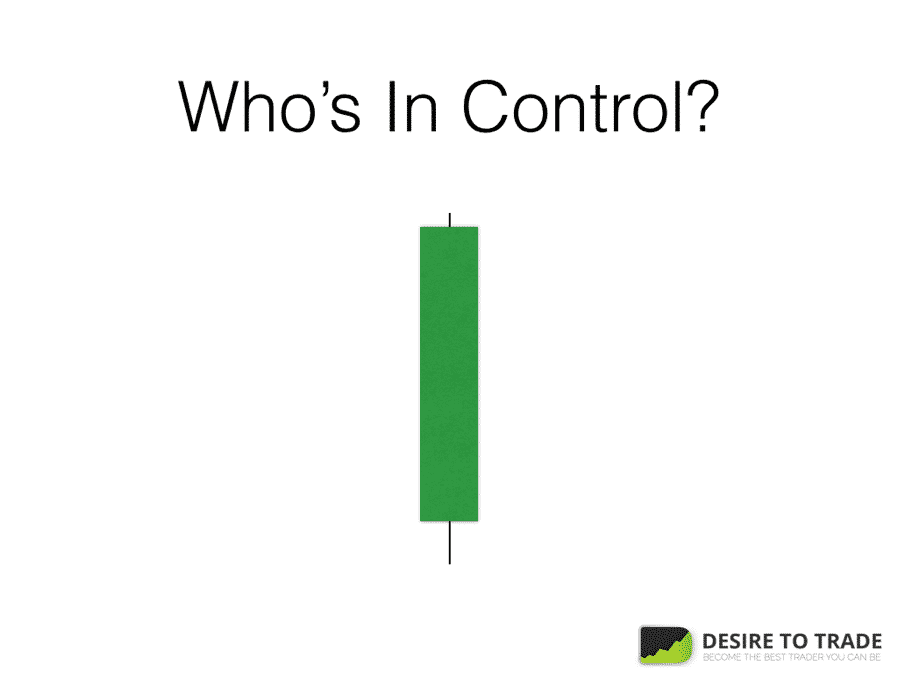
If I were to see the following, especially at the top of an uptrend I’d start to think that the buyers are losing some control.

The key here is to not only look at one candle, but a series of candlesticks to get a clearer picture of how the price is behaving.
When it comes to the bigger picture, technical indicators can also be of great help.
Technical Indicators
Technical indicators are mathematical models built-in about every trading platform.
Traders will usually have their favorite few indicators. The important point is to not rely blindly on indicators. Some indicators are made to give indications in trending markets while others will be of use in sideways markets.
Some common indicators:
- Relative Strength Index: measures a level of “overbought” and oversold for any currency pair.
- Moving Average: the average of the x number of periods that forms a line.
- Bollinger Bands: calculating certain average along with a lower and a upper bands that represent standard deviations.
What Kinds Of Trades Can You Take?
We’ll get slightly more advanced here by going into the types of trades.
When I see newer or experienced traders trying to complicate things, I refer them back to the 3 primary types of trades. I’ve included this here so you can get an idea of what it looks like to trade.
I’ve mentioned before that a currency pair can either be in a trend or moving sideways (in a range).
Reversal
When the price moves within a define range, traders assume that the range will hold if there is evidence through Japanese candlesticks and/or technical indicators.
As a result, Reversal trades can be entered at the bottom or top of a range in the direction of the other end of the range. That means, a trader would buy at the low of a range and sell at the top.
In practice, it looks like this:
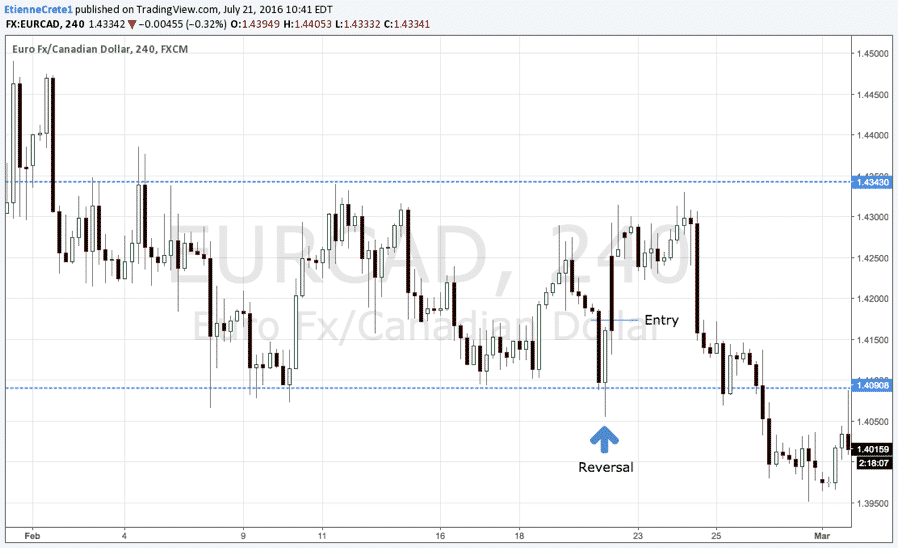
Breakout
The thing with ranging markets is that they will, soon or later, end. Price will eventually break out from the pre-defined range and is likely to start a trend.
At this point, traders are interested to enter a Breakout trade, which is entered beyond the range in the direction of the break.
It would look like this:

Pullback
Whenever, we, as traders identify a trend, we almost automatically think of entering on what we call a pullback.
Pullbacks are formed when the trend stops for a while before resuming. In an uptrend, for instance, it is totally expected for price to come down slightly before buyers re-gain the control.
Traders would be interested to enter once there is evidence that the price will get back and resume the initial trend, which would look like this:
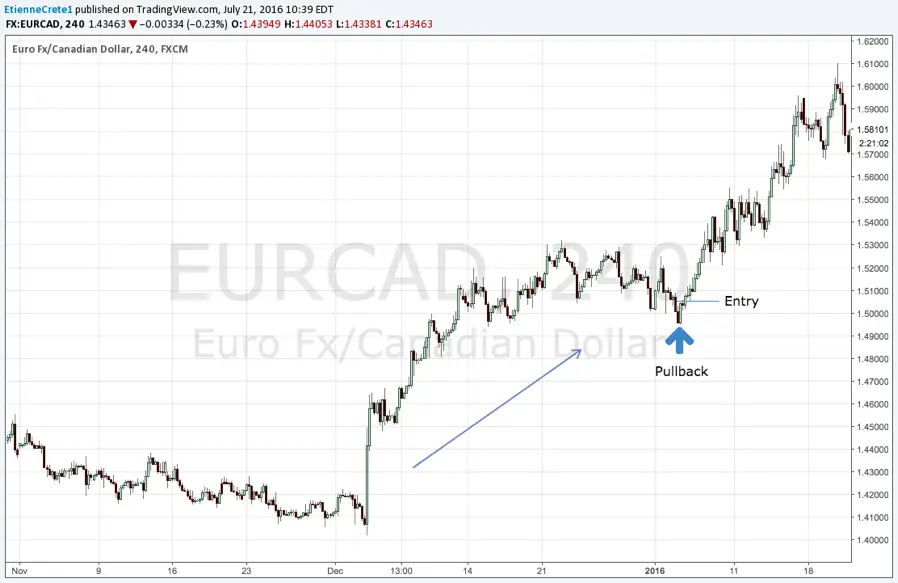
How to Go From Here
This was a broad overview of trading and a few things have been left out. However, trading is much simple than people try to make it.
The idea for any trade consists of combining Japanese candlesticks and technical indicators along with the types of trades described to increase the probability of any trade. A way to help you get started is using a free program like TradingView to view free stock charts and market data, all for free. Improving your trading performance with TradingView.
That being said, trading isn’t easy and the main thing to work on, once you have a plan, is your response to what happens in the market.
Trading, especially Forex, can be done on any time frame. You can hold trades for a few seconds or a few months and the Forex market is open 24 hours 5 days a week.
Other things traders have to be extremely careful about are money management and the expectancy of their trading strategy. Those topics are often overlooked by new traders…at their expenses.
Is Forex Trading A Safe Investment?
The foreign exchange market capped at around $5.1 trillion. It’s the largest market in the world, so if you want to make money, Forex is a good place to start. Because the Forex market has such high liquidity, you can buy and sell instantly. It’s perfect for traders and you don’t a job at an investment bank to get started.
Understanding how the Forex market works is crucial. They say fools rush in. Nowhere is this more evident than in Forex trading. Trading on the Forex markets is not, an “investment,” like you would invest in ETFs or bonds. Traditionally an investment is usually held “long-term” to increase in value over time due to compounding interesting. Forex investing doesn't follow this logic, as most trades are completed in minutes or hours. Therefore, trading Forex shouldn't be in your long-term investment strategy and is very risky.
Legendary investor Warren Buffett defines investing as “… the process of laying out money now to receive more money in the future.” The goal of investing is to put your money to work in one or more types of investment vehicles in the hopes of growing your money over time.
When you trade Forex, you're actively putting your money at risk. However, if you learn how Forex works and tried and tested trading strategies you can come out ahead.
Forex Strategies
While Forex may not be for all, if you're can bare the risks involved in Forex trading then you should do the following:
1. Use the Right Forex Trading Tools
You will likely have a whole host of different trading tools at your disposal. Don’t go crazy and use all of them. It’s confusing and you won’t gain anything. Stick to the bare minimum at first. The basics include an economic calendar, a volatility indicator, and tools that protect your trading accounts, such as a stop loss and trailing stop.
Know how these tools work before you use them. This is where a practice account comes in useful. Trailing stops and stop losses will protect your forex trading account from huge losses, but only if you use them correctly.
2. Be Wary of Leverage
Leverage helps forex traders make big profits on a relatively small investment, but it also exposes you to big losses. Only open small positions, as this helps control the amount of leverage you’re using. Again, you can practice this with a demo account.
Lastly, keep a trading journal and record your activities. It will help you spot any positive trends or bad habits.
3. Open a Demo Account
Open a demo account with a reputable Forex broker. A demo account lets you practice your trading strategy without risking any money. Use the time to get used to the trading platform, the tools, and how it all works. There is no pressure on you to open a ‘live’ account, so take your time and develop a trading strategy that is consistently profitable.
When you feel confident that you know what you’re doing, you can upgrade to a full account. However, it is best to wait at least four months before you take that step.
Tips to Remember While Using a Demo Account
In order to become a successful Forex trader, one requires doing a lot of practice to become familiar with the art of trading Forex. For this reason, different online trading platforms offer new traders the chance to learn the trade without risking their money.
With a demo account, you can try out different Forex trading strategies and learn your strengths and weaknesses as well as finding your most ideal platform to trade-in. You can fine-tune different strategies to make them work for your style of trade. All this prepares you for trading in a live account.
1. The Goal of Demo Account Trading
Unlike live trading, the goal of a demo account is not to make money. Your goal when using a demo account should be to familiarize yourself with trading and create a trading regimen formula that works for you.
When you start trading in a demo account, you need to create a plan and stick to it. Use the plan a few times as you assess whether or not it is working for you. If a certain plan does not work, you can try another plan until you find something that works for your trading.
The good thing about a demo account is that you can work on your trading discipline without risking your money. The more you trade in a demo account, the better you become at it and this gives you the discipline you need to survive in a live account when the time comes.
2. Use Demo Accounts to Mirror Your Real Actions
After some time trading in a demo account, you will eventually have to switch to a live trading account. In a live account, you use your money to make real money. To ensure that the strategies you practice in a demo account work for you, you need to make the experience as real as possible.
The first thing you can do is treat the money you trade in a demo account as though it was real money. If there are certain strategies you wouldn’t try out with your real money, you shouldn’t try them with your demo account. This is how you nurture trading discipline.
If you plan to start trading in a live account with a $10,000 deposit, you should also start trading in your demo account with the same deposit. Avoid the temptation of trading large amounts of money in your demo account if you will not trade the same amount in a live account. This is because having a large deposit on your demo does not prepare you adequately for your real money scenario.
Another way to mirror your circumstances in your demo account is to ensure you play with the same software you will play with when trading live. Part of the reason you use a demo account before a live account is to become familiar with the trading platform and also your broker. Never use a demo account on an unknown platform.
Live Trading vs. Demo Trading
It is important for you to understand that demo accounts usually have a favorable trading condition and thus may pull in a lot of money. These circumstances may not reflect on your live trading account.
It is normal to become nervous while trading with a live account. However, you do not get nervous when trading a demo account. This is because your mind already knows that a demo account does not risk your real money while live trading does.
You need to train your mind to be calm because fear causes you to make the wrong market moves which will cost you money.
Any trade expert will tell you that the best way to learn Forex trading is by using a demo account the same way you would use a live account. Train on the trading platform software and mirror your circumstances as much as possible. Stick to a plan that works to ensure you make the most from Forex trading.
Start Trading Forex
If you have come to the conclusion that you would like to invest your money. Then you should look into trading Forex from home.
You know that there are numerous ways to make money from home, but some will be more profitable than others.
Forex can be a very profitable venture. At the same time, you must understand that the risks can vary significantly. Many people prefer trading Forex and it is true that Forex offers a wealth of benefits that aren’t available with the alternatives.
Guest post by Etienne who is a trader who started in the Foreign Exchange market at 18 years old. He has an unstoppable passion for trading and founded DesireToTRADE, a blog aiming to help aspiring Forex traders develop a trading method that works for them, and ultimately shorten their learning curve. He is also the host the Desire To Trade Podcast, where he interviews successful traders around the world and provide actionable trading advice for those eager to succeed. Want to receive his free Complete Price Action Strategy Checklist?
